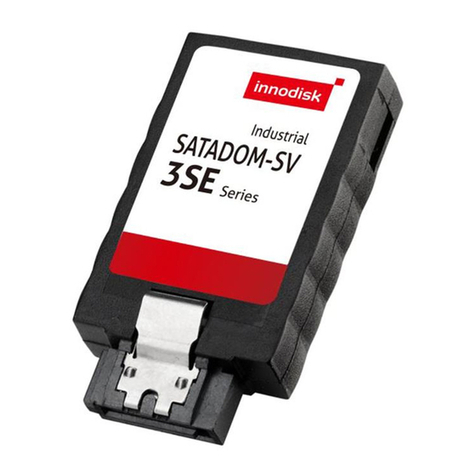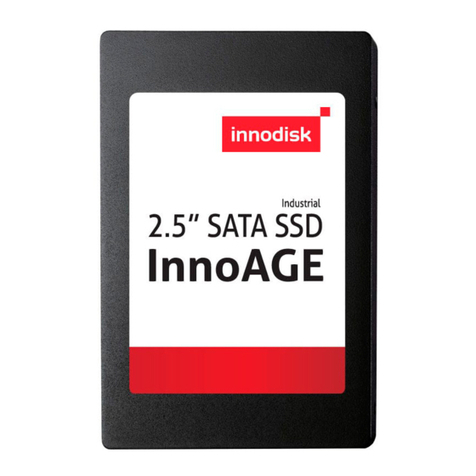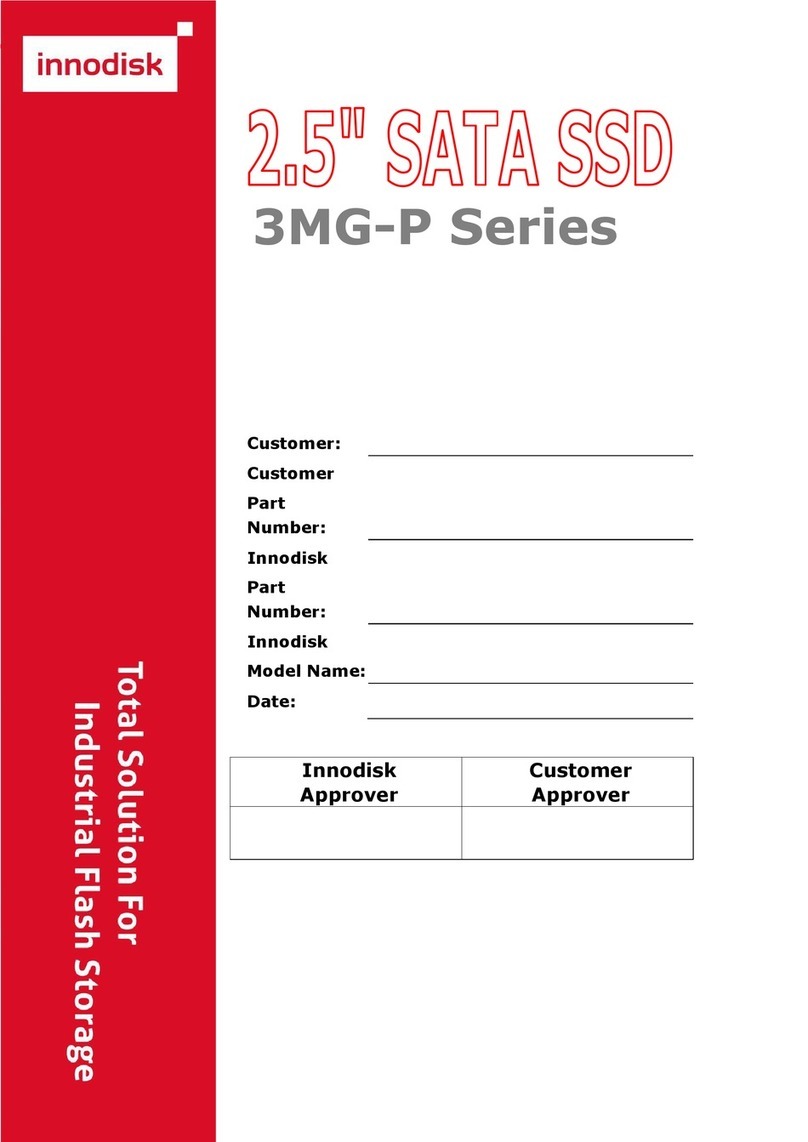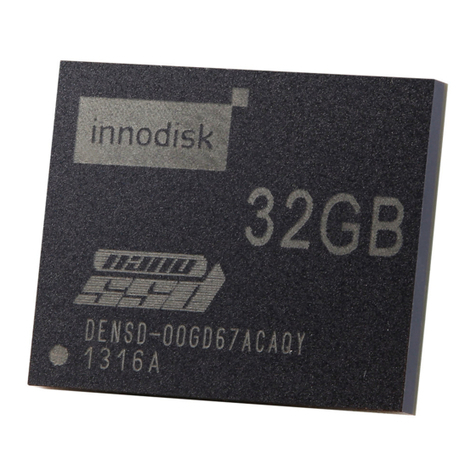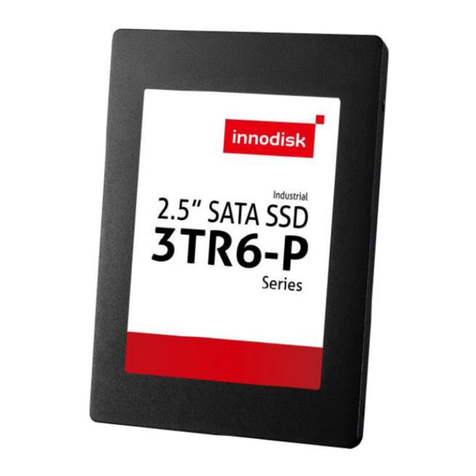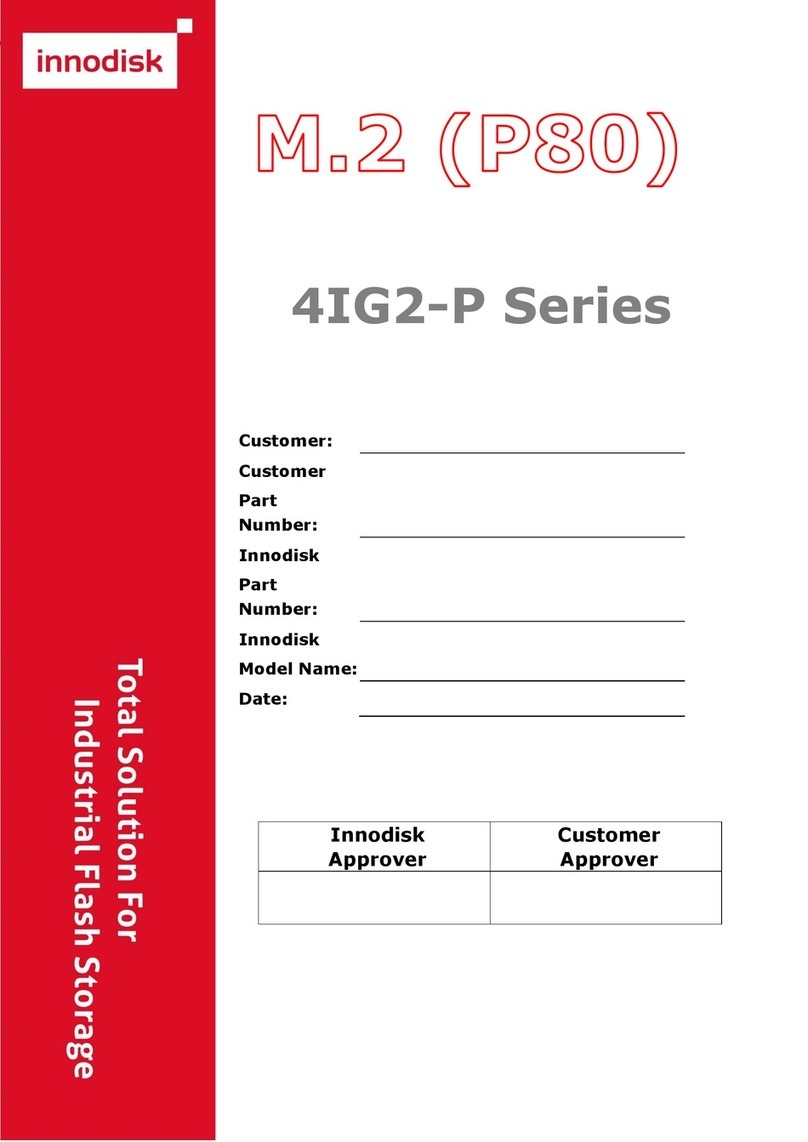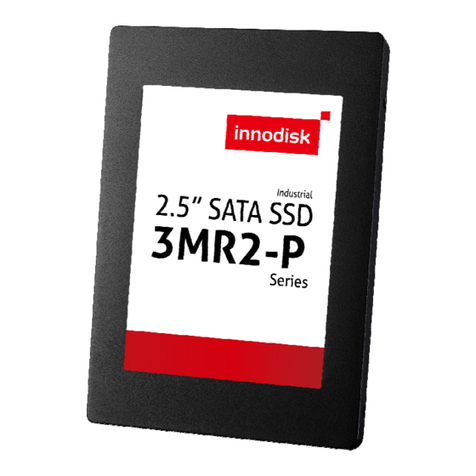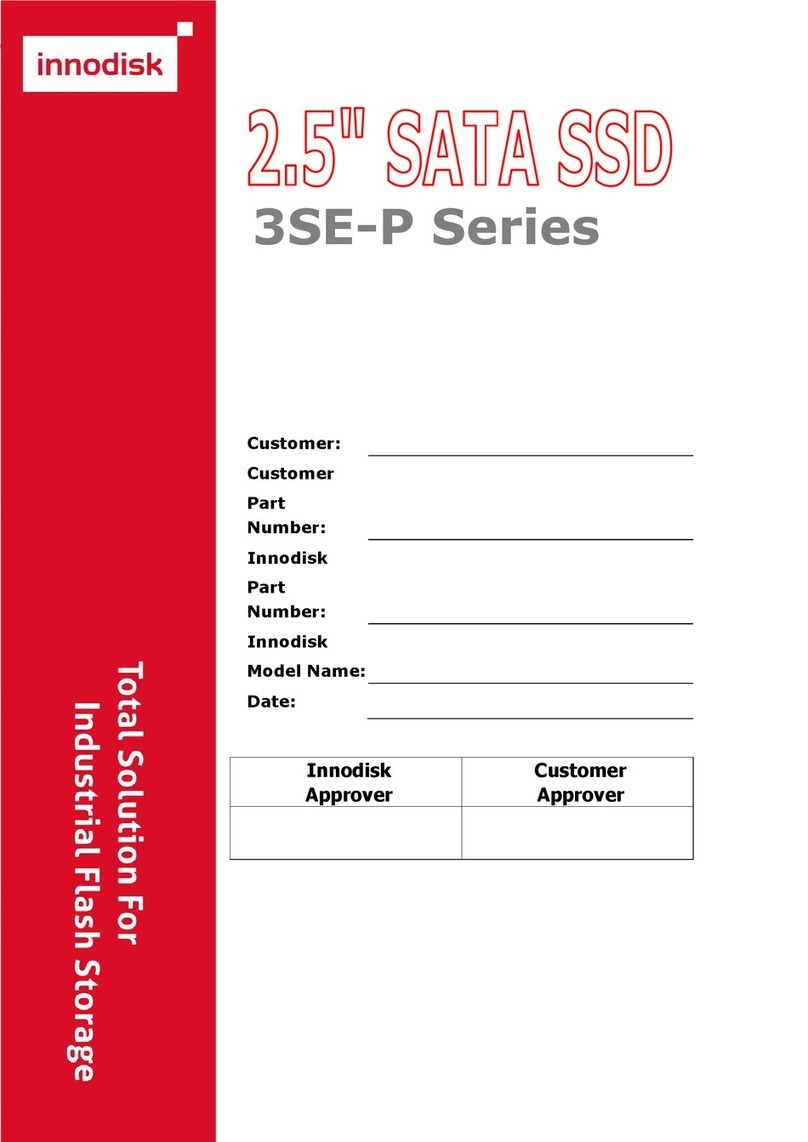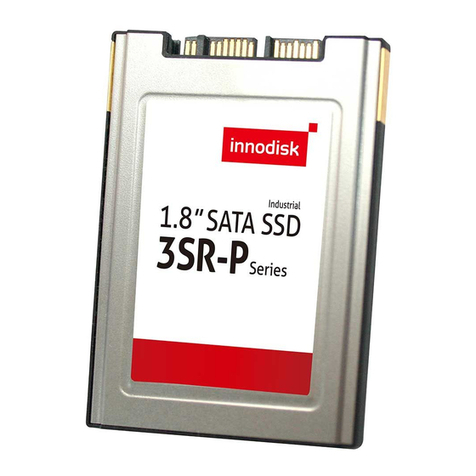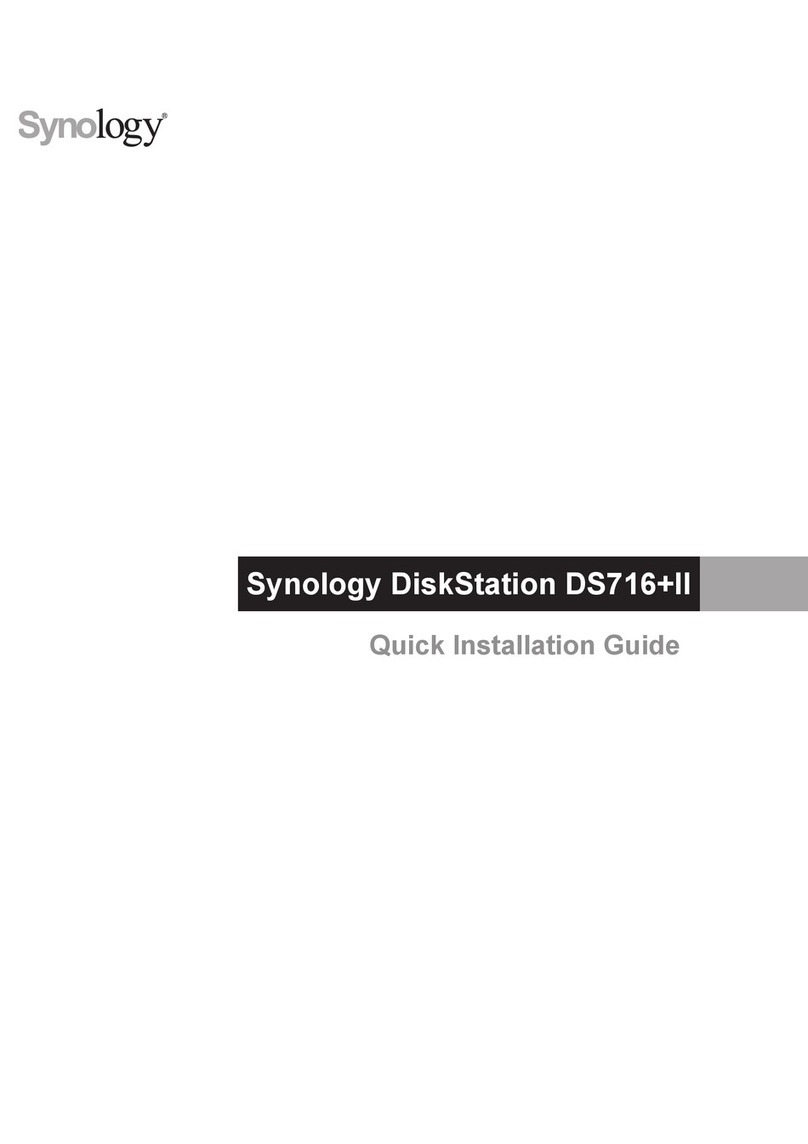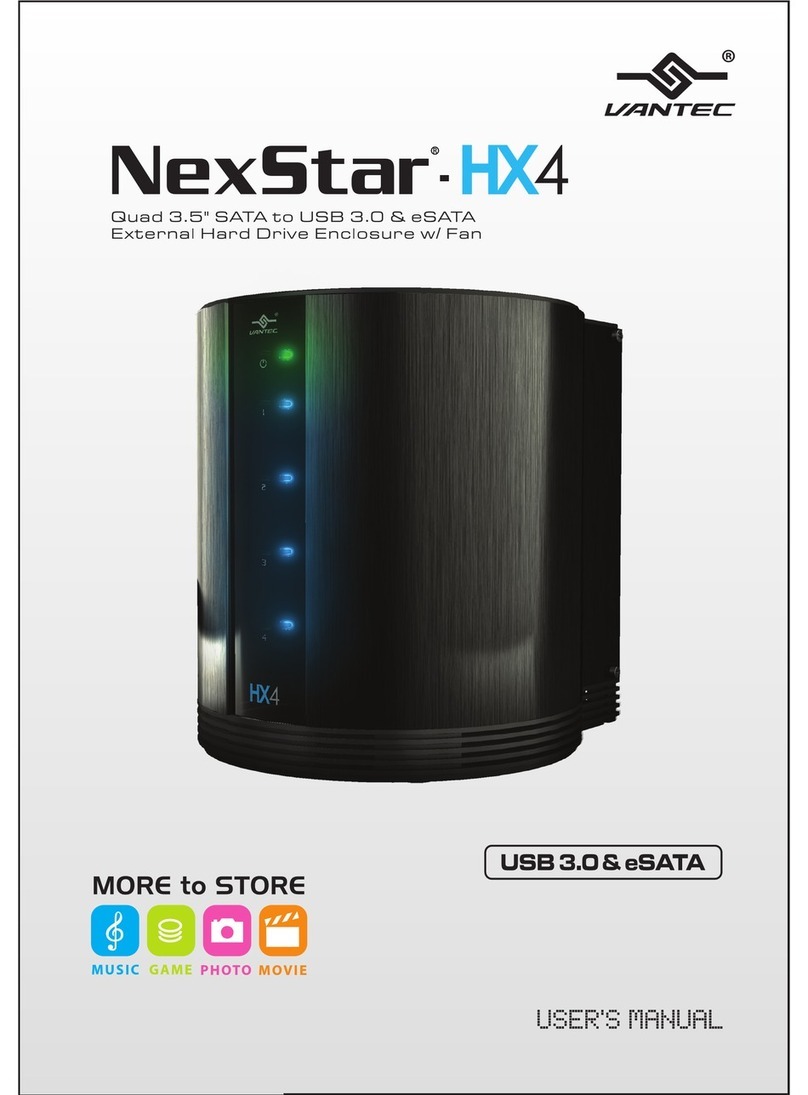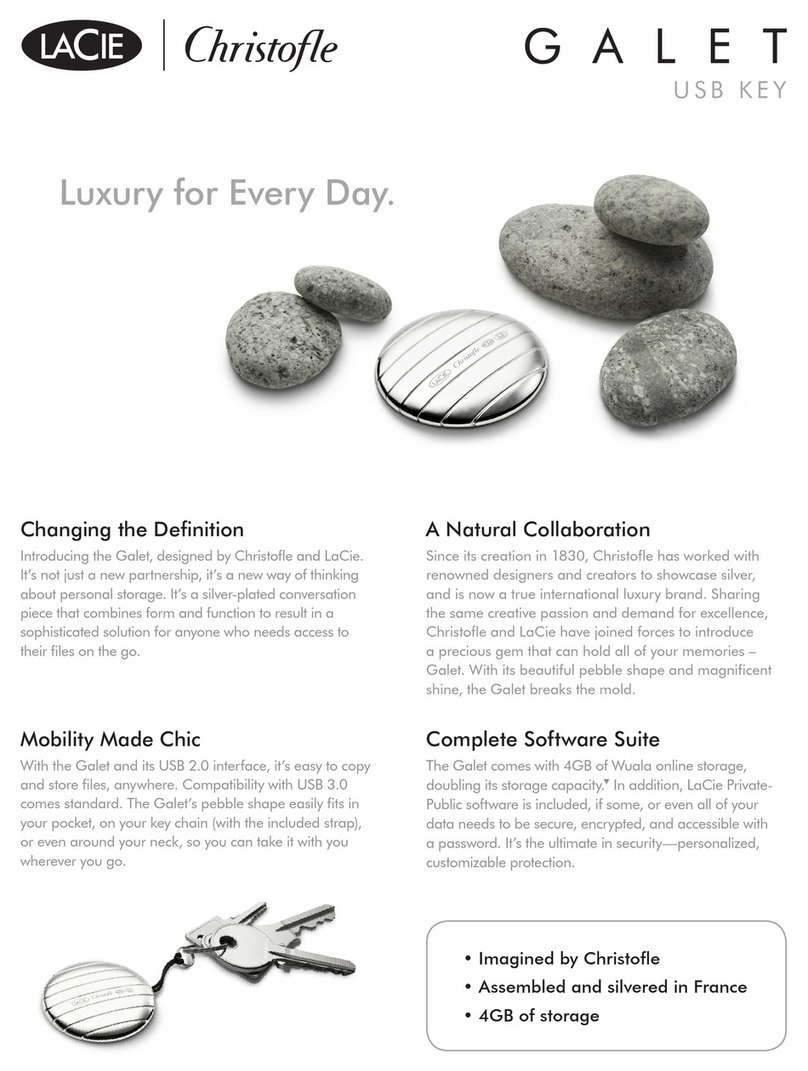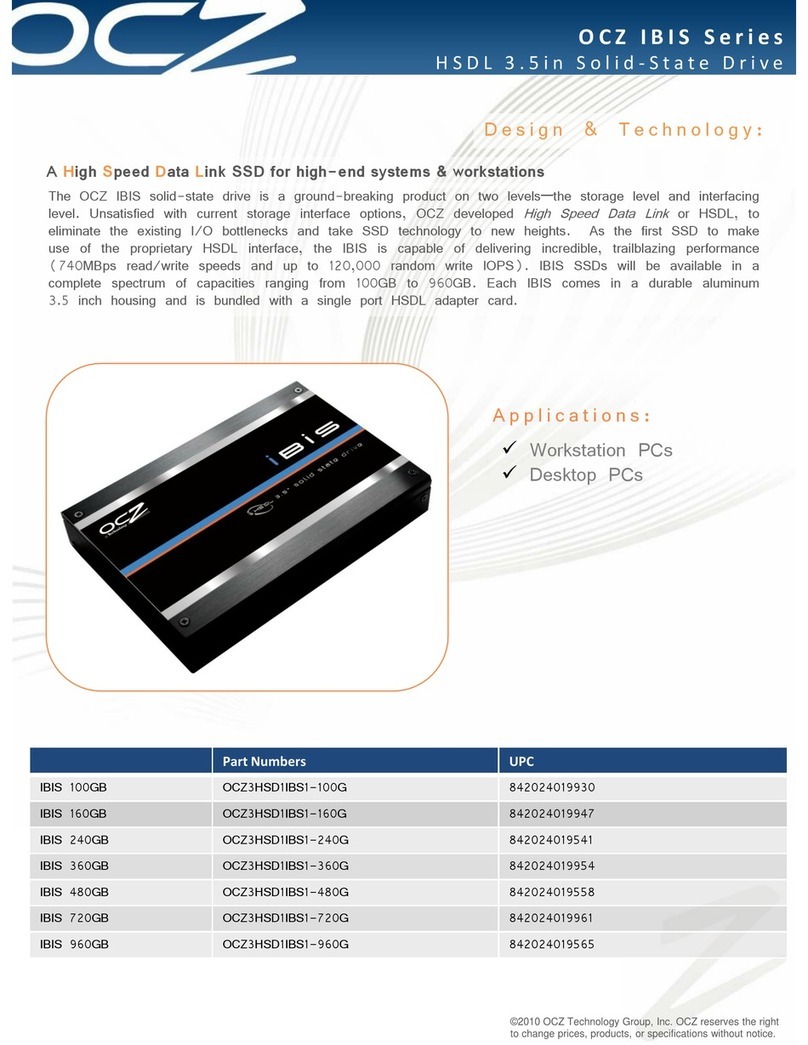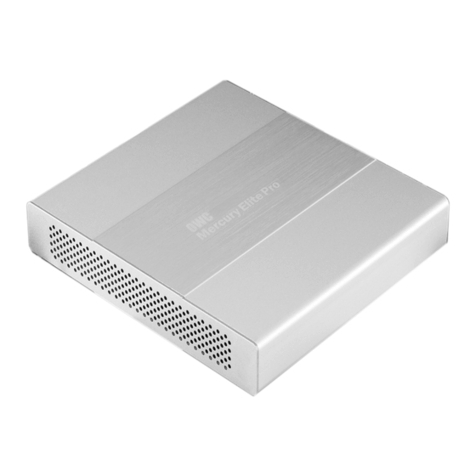nanoSSD PCIe 3TE7
2Rev 1.7 TPS, Apr., 2022
Table fo contents
LIST OF FIGURES ........................................................................................................ 7
1. PRODUCT OVERVIEW .............................................................................................. 8
1.1 INTRODUCTION OF INNODISK NANOSSD PCIE 3TE7 ..................................................... 8
1.2 PRODUCT VIEW AND MODELS .................................................................................... 8
2. PRODUCT SPECIFICATIONS..................................................................................... 9
2.1 Capacity and Device Parameters ........................................................................ 9
2.2 PERFORMANCE ........................................................................................................ 9
2.3 Electrical Specifications .................................................................................... 10
2.3.1 Power Requirement .................................................................................... 10
2.3.2 Power Consumption.................................................................................... 10
2.4 ENVIRONMENTAL SPECIFICATIONS ........................................................................... 10
2.4.1 Temperature Ranges................................................................................... 10
2.4.2 Humidity ..................................................................................................... 11
2.4.3 Shock and Vibration.................................................................................... 11
2.4.4 Mean Time between Failures (MTBF) .......................................................... 11
2.5 ROHS COMPLIANCE ............................................................................................... 11
2.6 Reliability ......................................................................................................... 12
2.7 TRANSFER MODE ................................................................................................... 12
2.8 Ball and Signal Description ............................................................................... 13
2.9 Power Supply & Sequence ................................................................................ 17
2.10 Mechanical Dimensions .................................................................................. 18
2.11 Seek Time....................................................................................................... 18
2.12 NAND FLASH MEMORY ........................................................................................ 18
3. THEORY OF OPERATION ........................................................................................ 19
3.1 OVERVIEW .......................................................................................................... 19
3.2 ERROR DETECTION AND CORRECTION ........................................................................ 19
3.3 WEAR-LEVELING .................................................................................................. 19
3.4 BAD BLOCKS MANAGEMENT..................................................................................... 20
3.5 POWER CYCLING .................................................................................................. 20
3.6 GARBAGE COLLECTION ........................................................................................... 20
3.7 TRIM ................................................................................................................ 20
3.8 POWER MANAGEMENT............................................................................................ 20
4. INSTALLATION REQUIREMENTS ............................................................................ 21
4.1 REFERENCE DESIGN .............................................................................................. 21
4.2 PRODUCTION GUIDE.............................................................................................. 21
4.2.1 Preheat ....................................................................................................... 21
